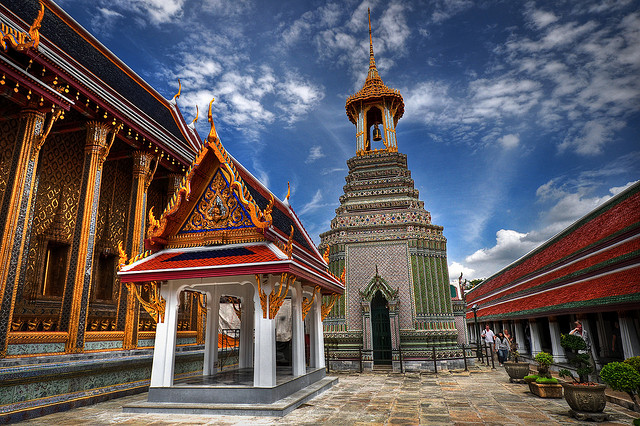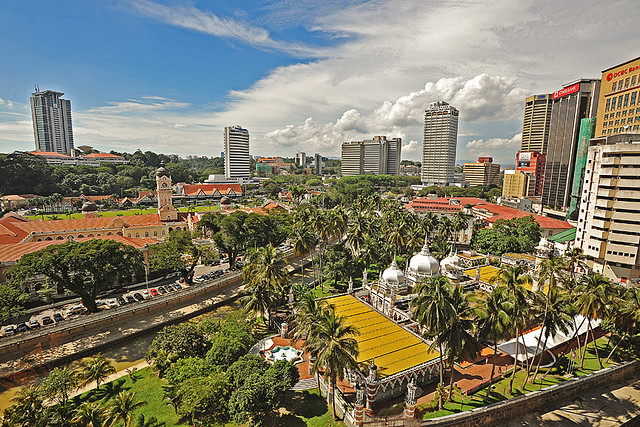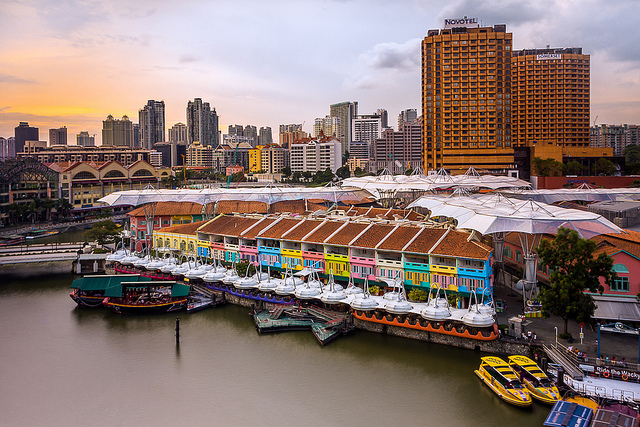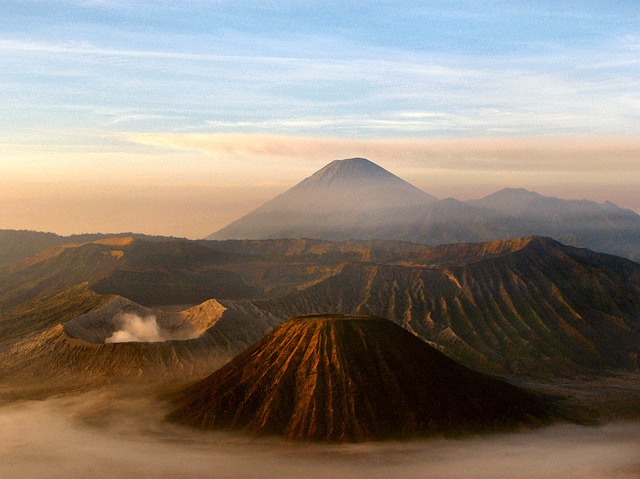Thailand – Temples & Beaches
Thailand is one of Southeast Asia’s most desirable vacation destinations, and for excellent reasons. Endowed with misty mountainscapes in the north and northeast, dotted with thousands of colorful and architecturally ornate wats all over, lined with white sand beaches and turquoise waters in the south, deeply steeped in Buddhist history, infused with Khmer, Lao, Cambodian and Malaysian cultures, and peppered with spices, Thailand can serve whatever cup of tea a traveler prefers. For this reason, it is mecca to an average of 10 million tourists a year, ranging from budget backpackers to well-heeled travelers, and everyone in between.

When to Go to Thailand
Monsoons drive Thailand weather, but so does geography. While the south is prone to changes in the prevailing winds, the north and northeast weather are more influenced by altitude and mountainous landscapes. Given these variations, it helps to see the weather patterns by region.
- Northeastern Thailand. Cool but relatively dry months are from November to February, and wet months are from June to October. The months of March to May are hot and humid.
- Northern Thailand. It can be chilly from October until February, while the weather starts getting warm by March and steamy by April. Rains start to come in May and last until September.
- Central Thailand. The months of November until January are pleasant months in Bangkok and surrounding central plains because it is cool and dry. The months of February until June can be sticky and hot, while July through October can be very soggy.
- Southeastern Thailand. There are only two seasons on this side of the Gulf of Thailand: hot and humid from January to August, and very wet from September to December.
- Southwestern Thailand. The coastal areas facing the Andaman Sea experience the same weather patterns as those facing the Gulf, but in reverse: April to October are the wettest months, while November to March are relatively dry and hot.
Getting to Thailand
Most international flights land in the newer Suvarnabhumi International Airport in the capital, Bangkok. Other international (mostly Asian) flights and most domestic flights land in the older Don Mueang International Airport which is also in the capital. Pattaya, Chiang Mai, Chiang Rai, Hat Yai and Phuket all have international airports, but mostly serve direct flights from neighboring Southeast Asian countries and domestic flights from regional airports.
Thailand can also be accessed overland. From Cambodia, travelers can cross the border from Siem Reap at Poi Pet to Aranyaprathet. Those coming from Laos may take the Friendship Bridge which spans the Mekong River (forming a natural boundary between the two countries) and connects the Lao capital Vientiane to Nong Khai.
Travelers from the south may drive up from Malaysia through these towns on its side of the border: Padang Besar, Bukit Kayu Hitam, the Songkhla province, and Pengkalan Hulu and Rantau Panjang. Those who travel by bus from Singapore and enter Thailand do so at Hat Yai.
There are presently two entry/exit crossings from Myanmar: Tachileik to Mae Sai on the Thailand side, and Kawthoung to Ranong.
Getting Around Thailand
In Bangkok, the most common means of transport are taxicabs (expensive) and ‘tuktuk’ (cheap). Tuktuks refer to auto rickshaws or motorized three-wheels with cabs; Thais call them ‘saamlaw.’ There are four-wheeled ‘tuktuks’ in Phuket which are essentially microvans instead of three-wheeled motorcycles.
Like any capital city, Bangkok has light-rail public transport, but it is the only Thai city with above-ground and underground rail system, known as the Skytrain and the Metro, respectively.
Motorcycle taxis or ‘mawtoesai rap jaang’ are also popular, but only for travelers with light or no luggage at all. These unsheltered 100cc to 125cc motorcycles can be rented with a driver for short-distance travel in Bangkok, or long-haul trips to the capital’s outskirts.
The Chao Phraya River was once Bangkok’s main artery, and still is, so getting around by boat is also an option, as there are still open waterways that are used for ferrying passengers and floating markets. Travelers can get to their destinations, especially west of Chao Phraya, onboard ‘klongs’ or long-tailed water taxis. The major departure area is Tha Chang for passengers bound to Thonburi.
In Bangkok and in major cities and big towns, the ‘sawngthaew’ are converted pick-up trucks that seat passengers in ‘two rows’ (which is its English translation). These conveyances are as extensive in network as the public buses, but are generally operated for mid-range trips. They are color-coded so that each color corresponds to a group of destinations and ply established routes over shorter distances. They can be rented like taxis, but may charge similar prices as the cabs.
Non-motorized ‘saamlaw’ or bicycle rickshaws/pedicabs are ubiquitous all throughout the country but not in the capital city.
For mid- to long-range travel around the country, public buses of various comfort levels – local buses are cramped, while super-VIP buses have sufficient legroom, have onboard toilet and are air-conditioned – pick up passengers along pre-determined routes and have terminals at every province. Non-government VIP buses are usually minivans that collect passengers beyond capacity so the conveyance ends up cramped and the traveler gets less value for his or her fare.
Motorcycle and car rentals are also another option for travelers who are willing to pay the price in exchange for comfort and time saved. There are reputable international chains that operate out of Bangkok and other high-density tourist areas, so beware of companies that require passport as collateral for vehicle rental. Insist on paying cash instead.
The government has also a well-managed rail network that traverses the northern, southern, northeastern and eastern Thailand. These are more convenient options than buses when longer journeys are required, and are recommended for travelers who want to enjoy the sights of the country along the way. For travelers who are time-compressed and would rather get from one destination to another while saving vacation time, flying to the next domestic airport is more sensible and, surprisingly, on the budget.
Accommodations in Thailand
Catering to a staggering 10 million visitors a year means that Thailand has developed an extensive accommodation infrastructure that caters to any budget, from ‘mattress in a box’ style of accommodation along Khao San Road in Bangkok to plush hotels in touristy areas and luxury resorts that charge a minimum of 4,000 Baht (US$130) a night. With a wide variety of accommodations, travelers don’t have any trouble booking a hotel in Bangkok or any other city in Thailand.
In between, there are guesthouses that can be had for as low as 100B a night, featuring a room with a fan, a shared toilet and shower. A dorm bed can be rented for a lot less than 100B, but amenities, as expected, are limited to only the most basic.
In areas that receive sizable foreign guests, there are guesthouses that have 24/7 hot shower, television, mini-fridge, wireless Internet connection, balconies and Westernized toilets. The Westernized versions of these guesthouses are hostels, but they can be more expensive and less private than budget stays.
From here, travelers can have a range of options for mid-priced accommodation. Boutique hotels are available in resorts and popular island destinations, but are generally scarce in smaller towns in the provinces (where guesthouses are more popular and cost-efficient).
What to Do in Thailand
As a country of considerable size and endless attractions, Thailand has practically everything for everyone, and the more than 20 million tourists it welcomed this year prove that claim. Thailand holidays run the gamut of lavish to practical, heavenly to more down-to-earth: From paradisiacal white sand tropical vacations to luxurious honeymoon retreats in its mountain resorts, to tramping the jungles and trekking remote Buddhist temples, to riding the elephants or riding the waves, Thailand offers a plethora of adventures for both the traveler who wants to rough it and the vacationer who wants to have nothing but pampering and good time.
The north and northeastern regions are rife with opportunities to trek the jungles and stay overnight with hill tribes, ride the elephants and interact with wildlife, soak in hot springs and stand near waterfalls, or discover Khmer ruins and thousands of Buddhist wats that dot the region.
Bangkok and the plains of Central Thailand offer both divine and mundane experiences in one neat, and sometimes riotous, package. Temples that glisten along the Chao Phraya are as visual delights as the floating markets of Ratchaburi, and Thai massage is as relaxing to the body as it is to the spirit.
The southern provinces that face the Gulf of Thailand and Andaman Sea, notably Ko Samui and Phuket, respectively, beckon with cobalt blue waters and endless stretches of white sand, promise spectacular sunsets, bedazzle with colorful marine life, and inspire solitary wanderings along miles of quiet beaches.
Culturally, Thailand is Buddhist temple overload, as literally thousands of them are spread across the land. Sukhothai and Ayutthaya, first and second capitals of Siam (as Thailand was then known) are both cultural magnets, since well-preserved ruins and centuries-old Buddha figures and relics still stand.
As much as Thailand is steeped with Buddhist symbolism and festivities, it is also a full-blown destination of hedonism and nightlife that is best expressed in Full Moon parties. Outside of Bangkok, Pattaya is in the center of it all.
Thailand is equally famous for its curry-based cuisine. Authentic Thai meal is a treat unto itself, be it enjoyed on the streets or plush banquet that feature royal cuisine.
The Land of Smiles maybe a very well-trodden path for the millions of travelers looking Southeast for their vacations, but the country has managed to cling unto its spiritual and cultural essence whilst offering the comforts and convenience that would make any holiday memorable. For this alone, it is worth leaving the confines of one’s own familiar environment, and dive into an exotic land that promises to enchant.



